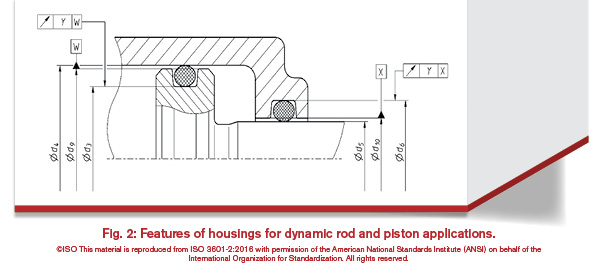Iso 4406 Pdf
ISO 4406:1999 Codes – A three digit code indicating number of particles per milliliter greater than 4, 6, and 14 microns Specifying proper filtration has become more difficult since the days of “nominal” rated filters. ISO 4406 is a three part code (e.g. 18/17/13), where the first number encodes the number of particles greater than 4µm in size, the second number refers to particles greater than 6µm, and the third number quantifies particles greater than 14µm (4/6/14). The ISO Code numbers themselves are quantified in the below table.
- The international standard ISO 4406, “Hydraulic fluid power — Fluids — Method for coding the level of contamination by solid particles” provides a framework for reporting the concentration of contamination particles in hydraulic oil using an automatic particle counter (like the Hiac or Accusizer 780).
- This involves drawing a quantity of oil through a 0.8µm membrane. This detects more contaminants than the ISO 4406 or NAS 1638 methods, including oil oxidation products which are responsible for varnish formation. This reference chart provides a simple comparison test for field checks of the condition of hydraulic fluids.
- Cleanliness Code Conversion: SAE AS 4059 – Equivalent ISO 4406 Class Based on ISO 4406: 1999 and SAE AS 4059 Revised 2005- 05: Rev E 8/29/07. SAE AS 4059 to ISO 4406: 1999 correlation chart.
- ISO 4406 Particle contamination in oil is specified from particle count. The ISO 4406 oil cleanliness classification system consists of 3 figures. Each figure defines a class within a size range. A typical ISO 4406 particle count will be indicated as: 19/17/14 Particles 2 µ Particles 5 µ Particles 15 µ ISO 24/22/19 ISO 15/12/9.
- ISO-Code from to 1.000.000 2.000.000 21 500.000 1.000.000 20 250.000 500.000 19 130.000 250.000 18 64.000 130.000 17 32.000 64.000 16 16.000 32.000 15 8.000 16.000 14 4.000 8.000 13 2.000 4.000 12 1.000 2.000 11 500 1.000 10 250 500 9 130 250 8 64 130 7 32 64 6 16 32 5 ISO 4406 counts particles accumulatively, i.e. All particles that are larger.
The most critical quality of hydraulic fluid you should consider is that of cleanliness. We refer to the size and quantity of particle contamination when discussing cleanliness, and so that we are all on the same page, standards were created for measuring and expressing this quality. Although the standard for oil cleanliness has changed over the years, we’re at a point in history when we all seem to agree on the method to test and express fluid contamination. This standard is world-wide, which for the fluid power industry and its plethora of global organizations, is quite astonishing in and of itself.
ISO 4406:1999 is the current method for coding the level of contamination by solid particles, as spelled out by the International Organization for Standardization, which is more affectionately known by its acronym, ISO. Its method has been developed to test and measure the average size and quantity of particles within a given volume of fluid, which in this case is one milliliter.
The particles are measured by specialized machines using a laser to count the size and number of particles breaking the beam as they flow past. Based on the data collected from the machine, three sizes of particles considered most damaging in a hydraulic system are averaged out and expressed as per milliliter. The particle sizes are 4, 6 and 14 μm, chosen because of their potential to cause damage between moving surfaces separated by full film lubrication, such as the spool and body in a directional control valve. To give you an idea of how fine even the largest 14-μm particle is, note that it is only just over ½ a thousandth of an inch.
Each of the defined particle sizes are expressed in a given range, rather than the actual particles measured in the test. This allows for both easy expression and forgiving test results, as no particle counter can accurately measure every single 4-μm particle in a milliliter of fluid. The number of particles of each size is expressed as a single number between 0 and 28, where 0 is exactly zero particles, and 28 represents up to 2.5 million particles per ml. Both numbers are rare extremes, as even new oil has infinitely more particles than 0, and if you have 2.5 million of any given particle size, you’re in a whole heap of trouble.

Iso 4406 Pdf Free
If you refer to the attached diagram, you can see the numbers are first expressed in 4 μm, with 6 and 14 μm following, respectively. Each number represents a range, and in the example, 22 represents between 20,000 and 40,000 of the 4- μm particles in just one milliliter of fluid, even though the machine measured 22,340 particles. It goes on to show between 1300 and 2500 6- μm particles, and between 40 and 80 14- μm particles.
Iso 4406 Pdf Parker
Every number represents double the range of particles, and this is an important consideration. How to decrypt rgss encrypted archives. This means that an ISO Code of 22/18/13 has quadruple the particles as an ISO Code 20/16/11, so don’t be misled by small increases in the ISO Code. Because this system is now a worldwide standard, hydraulic manufacturers publish minimum requirements of ISO 4406 cleanliness. A piston pump manufacturer would specify at least 19/17/14, for example.
Norma Iso 4406 Pdf
So now that you’re familiar with the ISO cleanliness code, you can monitor and decipher your quarterly oil sample reports (you are sampling your oil quarterly, right?).